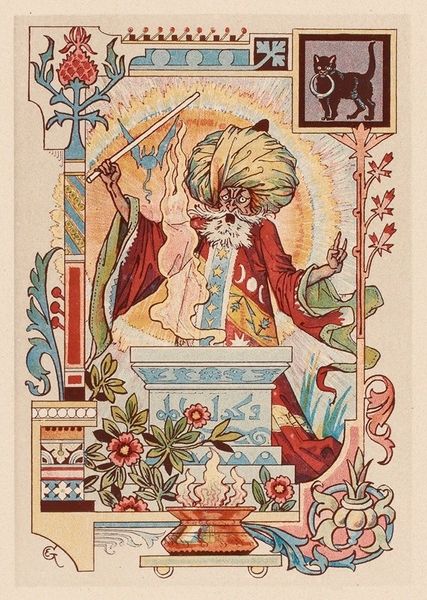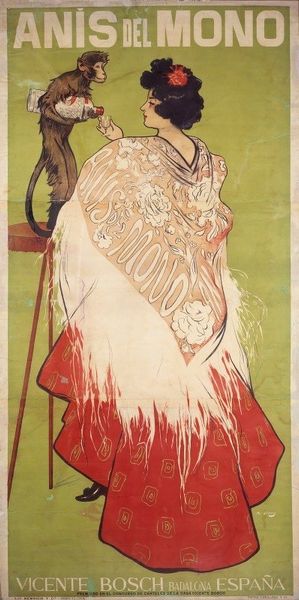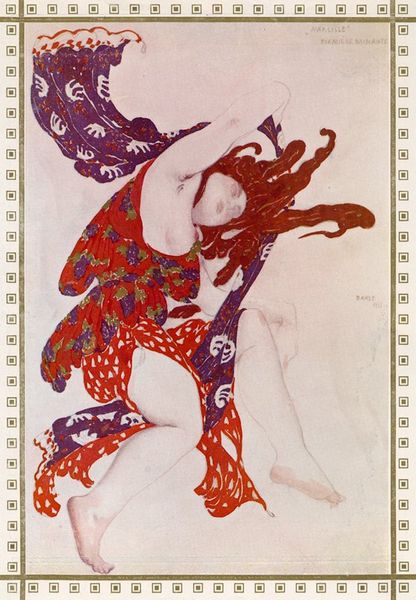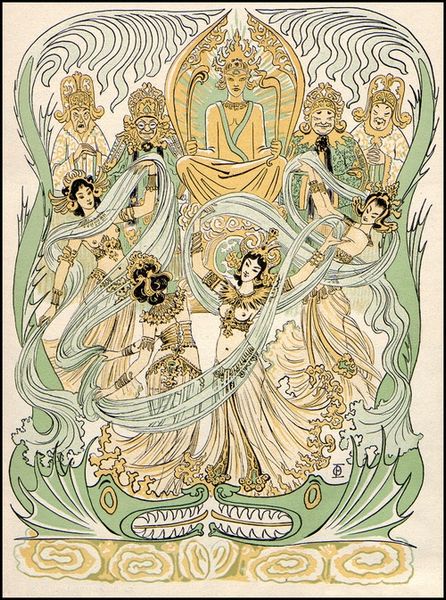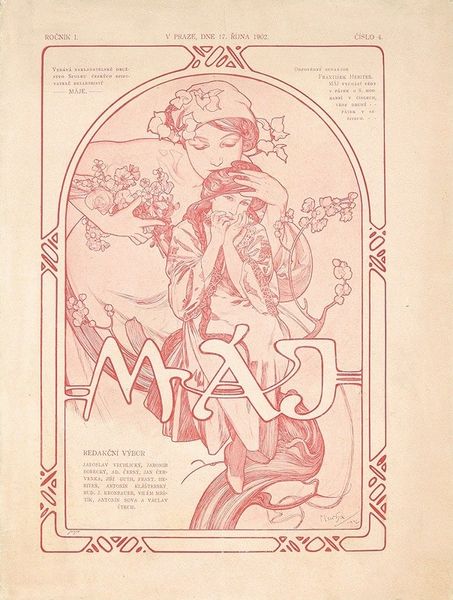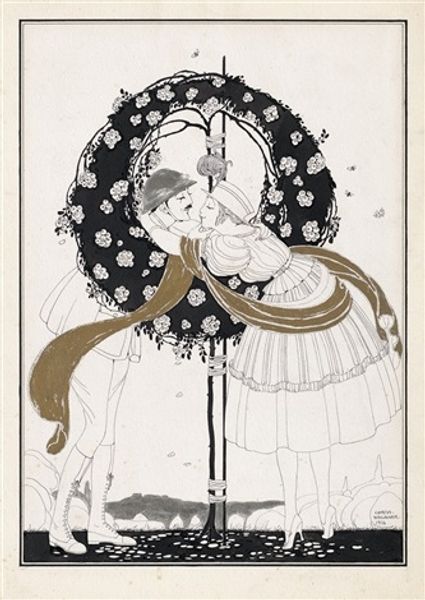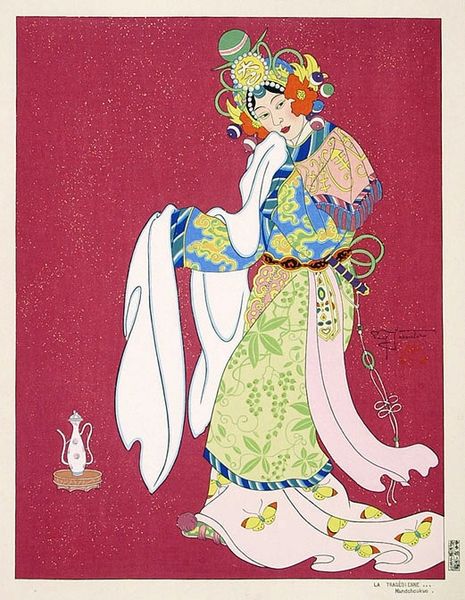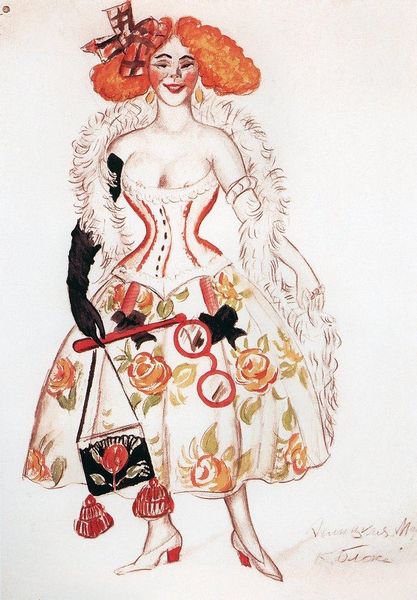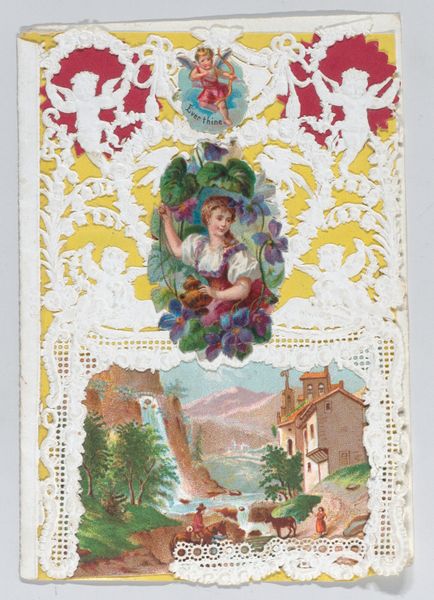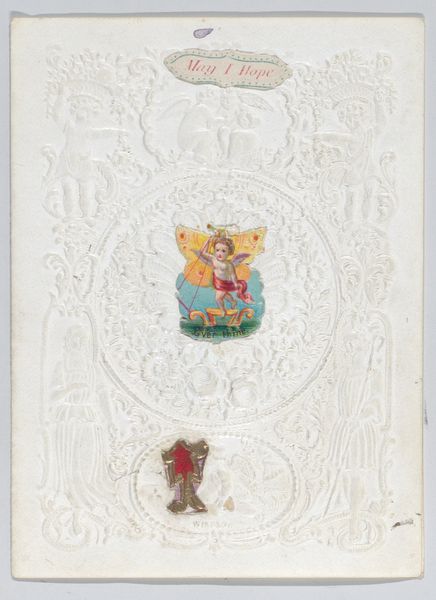
print, watercolor
#
portrait
#
art-nouveau
#
water colours
# print
#
watercolor
#
sketch
#
symbolism
#
watercolour illustration
#
watercolor
Copyright: Public domain
Curator: Let's discuss this vibrant print by Léon Bakst, titled "Front cover of Comoedia," created in 1909. He worked with watercolors and combined print techniques in it. It was conceived as the cover for a theatre magazine, offering a glimpse into the world of the Ballets Russes. Editor: My immediate reaction is that it’s dazzling! The swirling patterns, the delicate washes of watercolor, and the suggestion of movement... It feels theatrical and utterly decadent. Curator: Indeed. Bakst was hugely influential in shaping the visual identity of the Ballets Russes. His costume and set designs, often pushing boundaries with color and exoticism, greatly contributed to the company’s success and notoriety. Editor: Thinking about Bakst and Diaghilev, one can't ignore the undercurrent of cultural appropriation, right? Drawing heavily from Orientalist fantasies, repackaged for a European audience. It's visually stunning, but it exists within a problematic power dynamic. Curator: Absolutely, and examining that dynamic is crucial. The Ballets Russes both popularized and arguably commodified "exotic" cultures, influencing fashion and design, but also reinforcing colonial perspectives. Editor: I’m drawn to how the costume almost obscures the dancer's individual identity. Are they meant to represent pure aesthetic form rather than a person? Curator: Perhaps. The focus shifts from individual virtuosity towards a holistic aesthetic experience, integrating dance, music, and design into a single spectacle. But also the visual language here, so indicative of Art Nouveau, becomes a celebration of spectacle above the individuality or even skill, necessarily, of a given artist or dancer. Editor: It definitely makes me think about accessibility. The figure presented feels like an idealized persona far removed from everyday life, possibly contributing to a feeling of inaccessibility for a viewer of Bakst’s time, let alone audiences today. Curator: That tension is inherent to ballet and, arguably, to the Art Nouveau movement, to represent the "unattainable dream" that fed into the politics of taste in the period. Art intended for an elite readership could offer this remove to its readers. Thanks for pointing this aspect to us. Editor: My pleasure. It is vital that we constantly reflect upon who art really represents, who has access, and at whose expense these artistic feats are constructed. I think Bakst's works are key to examine power dynamics and cultural exchange during the early 20th century.
Comments
No comments
Be the first to comment and join the conversation on the ultimate creative platform.

